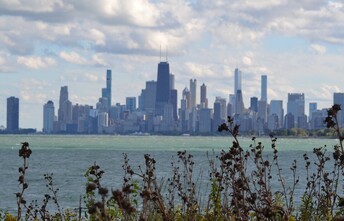1. Choose the Right Platforms
Not all social media platforms are created equal, and each caters to a different audience. To maximize your brand's reach, it's essential to identify the platforms that align with your target customer’s demographic. Instagram is popular among younger audiences, while LinkedIn may be more suitable for B2B businesses. By focusing your efforts on the platforms your audience frequents, you can make a more significant impact with your brand messaging.
2. Develop a Consistent Brand Voice and Aesthetic
Consistency is key when it comes to building brand awareness. Your brand's voice, tone, and aesthetic should remain uniform across all social media channels. This not only reinforces brand recognition but also helps in creating a cohesive and memorable brand identity. Whether it's the choice of colors, style of imagery, or the language used in your posts, maintaining a consistent brand voice will contribute to a stronger and more lasting impression on your audience.
3. Engage Your Audience with Compelling Content
Content is the cornerstone of any successful social media strategy. Develop a content calendar that includes a mix of informative, entertaining, and promotional content. Post consistently. Plan on posting at least twice a week, hopefully daily if you have the time and resources. Share behind-the-scenes glimpses, user-generated content, and industry-related news to keep your audience engaged. Visual content, such as images and videos, tends to perform well, so consider incorporating these into your content strategy. The goal is to create shareable, relatable content that fosters a connection between your brand and your audience.
4. Utilize Paid Advertising Strategically
While organic reach is valuable, paid advertising can significantly amplify your brand's visibility. Most social media platforms offer targeted advertising options, allowing you to reach specific demographics based on factors like age, location, interests, and more. Invest in targeted ad campaigns to increase your brand's visibility among potential customers, who are not following you on social media.
5. Foster Community Engagement
Building brand awareness goes beyond mere visibility – it involves creating a community around your brand. Actively engage with your audience by responding to comments, messages, and mentions. Encourage user-generated content by running contests or featuring customer testimonials. Building a sense of community fosters loyalty and can turn customers into brand advocates, further extending your reach through word of mouth.
6. Monitor and Analyze Performance
To refine your social media strategy, it's crucial to regularly monitor and analyze performance metrics. Most social media platforms provide analytics tools that offer insights into the reach, engagement, and demographics of your audience. Use this data to understand what is working well and what needs improvement. Adjust your strategy accordingly and experiment with new ideas.
7. Stay Current with Trends and Algorithm Changes
Social media is dynamic, with trends and algorithms constantly evolving. To stay ahead of the curve, keep an eye on industry trends and platform algorithm changes. Adapt your strategy to leverage new features, formats, and trends that align with your brand and resonate with your audience. Being proactive and adaptable will ensure that your brand remains relevant and continues to capture the attention of your target demographic.
Conclusion
Social media is a powerful tool for building brand awareness when utilized effectively. By selecting the right platforms, maintaining a consistent brand identity, creating compelling content, utilizing paid advertising, fostering community engagement, and continuously monitoring performance, organizations can effectively enhance their online presence and connect with their target audience. Embrace the dynamic nature of social media, stay informed about industry trends, and consistently refine your approach to ensure that your brand not only stands out but thrives in the ever-expanding digital landscape.

 RSS Feed
RSS Feed